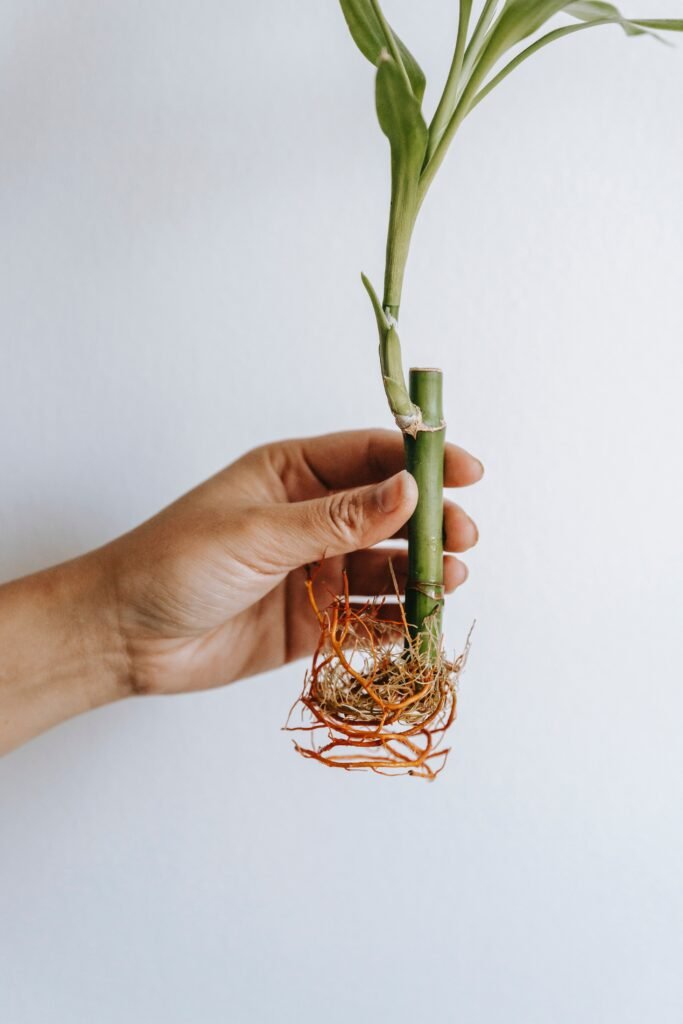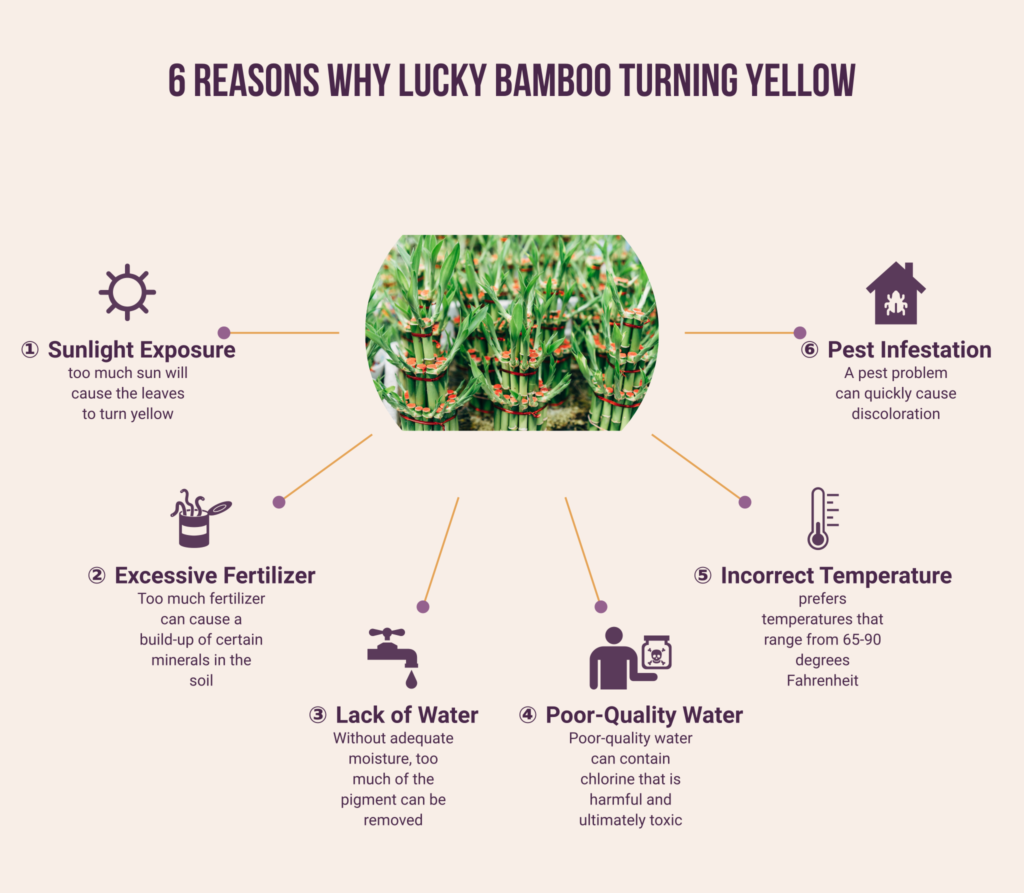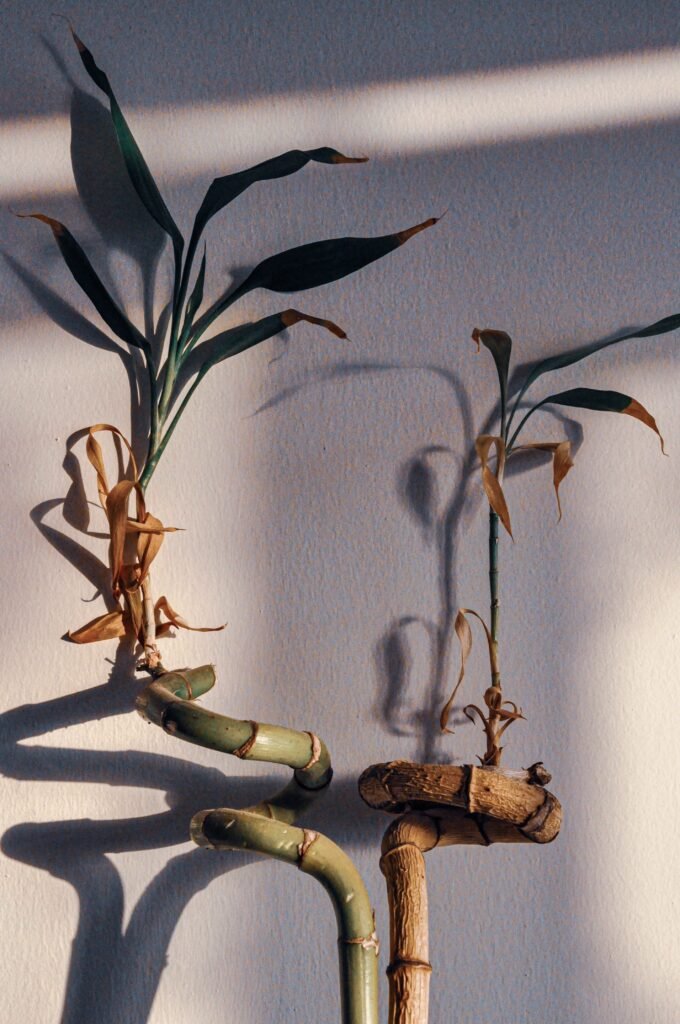Why Is My Indoor Bamboo Plant Turning Yellow
0Shares
Why is my indoor bamboo plant turning yellow? Is this question ringing in your head? That can be really disheartening! Do not worry, though, because there could be a range of potential causes for why this is happening.
Bamboo indoor plants are the perfect addition to any home! Not only are they low-maintenance and easy to care for, but their unique structure makes them a beautiful centerpiece in any room.
Plus, bamboo is said to bring luck and fortune into your home – what’s not to love? It’s a fantastic way of adding a touch of nature without worrying about additional upkeep or maintenance. Plus, they’re also an awesome choice whenever you want to add more green leaves into the mix!
The reality is that when it comes to keeping your beloved bamboo plant looking its best, there are a few things to keep in mind. From the type of soil and water you use to how much sunlight the plant is exposed to, understanding what makes your bamboo happy can help you get back the beautiful greenery you once had!
Keep reading for tips on why your indoor bamboo plant may be turning yellow.
What Is Lucky Bamboo?

Have you heard about the amazing Lucky Bamboo? This unique plant isn’t actually a bamboo plant at all. It’s actually an evergreen from the genus Dracaena sanderiana. This ‘lucky’ plant is enjoyed for its ease of care and decorative look – typically featuring long stems tied together with colorful thread, resulting in a visually stunning display. Often used as a gifting tradition or Feng Shui practice, lucky bamboo adds beauty and good luck to any home or office environment!
The even better news is that it doesn’t require much expert knowledge to keep alive – add filtered water every few days and make sure it receives indirect sunlight. A fun fact; The number of stalks of a lucky bamboo arrangement can indicate different meanings – three stalks represent happiness, prosperity, and longevity.
6 Reasons Why Lucky Bamboo Turning Yellow

Many people wonder why their lucky bamboo plants suddenly become yellow or exhibit other signs of decline. If this is happening to you, there are six key reasons to be aware of to diagnose and solve the problem.
From being left in too much direct sunlight to being under watered and overwatered, understanding why your lucky bamboo has turned yellow will help you address the issue and bring it back to good health. So let’s dive in and find out what’s causing all that yellowing – for good!
① Sunlight Exposure
Did you know that sunshine can be bad news for your lucky bamboo plants? While angling for an Instagram-worthy arrangement full of lush green leaves may seem like a bright idea (pun intended!), too much sun will cause the leaves to reach for the stars rather than turn upward.
If you’re concerned that your lucky bamboo won’t be getting enough light without added sunshine, never fear: indirect light and ambient light can provide all the glow your plant needs.
② Excessive Fertilizer
Despite its name, lucky bamboo uses nitrogen, phosphorus, and potassium from the soil just like any other plant. Too much fertilizer can cause a build-up of certain minerals in the soil and overwhelm your poor lucky bamboo’s natural ability to absorb what it needs.
If left unchecked, the fortunate foliage eventually stops being able to take up nutrients altogether, leaves wilt, and your lucky charm turns yellow before you know it! So remember: fertilizing isn’t always left to luck; important for healthy plants – even luck doesn’t favor over-fertilization!
③ Lack of Water
While these resilient plants can survive in conditions as dry as a desert, they still need hydration. Without adequate moisture, too much of the pigment can be removed from each leaf which causes them to look yellowish. If your bamboo has gone yellow, don’t toss it out just yet – simply give it a drink and watch the color come back!
④ Poor-Quality Water
Taking proper steps to ensure the plant’s water source is of the best quality could prevent your beloved lucky bamboo from turning yellow. Poor-quality water can contain things like chlorine, ammonia, phosphates, and nitrates that are harmful and ultimately toxic for the lucky bamboo.
High levels of these materials can lead to chlorosis (yellowing of foliage), fungal problems, or a generally unhealthy appearance. It is important to ensure you’re using quality, filtered water, or spring water when watering your lucky bamboo.
⑤ Incorrect Temperature
You might not immediately link this decay in appearance to temperature, but often incorrect temperatures can be why your lucky bamboo turns yellow. A lack of knowledge and awareness about temperature maintenance can harm these plants.
Lucky bamboo prefers temperatures that range from 65-90 degrees Fahrenheit, which may be hard to maintain throughout the seasons in some regions. If the temperature drops too low or goes up too high, then your precious lucky bamboo can start losing its vibrant green color and turn yellow instead.
⑥ Pest infestation
While these plants are generally hardy and easy to care for, a pest problem can quickly cause discoloration and death of the leaves of your beloved lucky bamboo. Pests like aphids and mealybugs are often attracted to the warm and humid environment of your home and aren’t too friendly for plants like lucky bamboo. If you spot any signs of infestation, it’s best to act quickly – otherwise, the poor thing might start wilting and losing its vibrant color.
Why Is My Indoor Bamboo Plant Turning Yellow: Saving a Bamboo Plant Turning Yellow

Are you feeling frazzled because your bamboo plant is turning yellow? Don’t worry – with a few simple steps; you can revive and save it! Taking the time to give your neglected bamboo the TLC it needs will help to get it back on track and looking beautiful in no time.
Best of all, getting a bamboo plant back in good health is not as hard as you might think. Learn how you can get that vibrant green color shining through again. Get ready to bring your beloved bamboo back from the brink of disaster!
🪴 Change the Water
If the stalks of your lucky bamboo start to turn yellow, change the water right away for in-water plants. This approach may occasionally be effective when the plant hasn’t absorbed enough toxins to kill it. In some situations, though, it might already be too late to salvage the plant. This is especially true if the yellowing occurs on the stalk rather than on the leaves.
🪴Re-pot in Dirt
Ditching the water for rich, dark dirt can be exactly what your plant needs for one last shot at a second life. Don’t worry, though: repotting is easy. First, choose a growing container with plenty of space. Make sure there are enough drainage holes on the bottom so excess moisture can escape.
Next, fill your container with dirt and give your Lucky Bamboo its perfect home. Finally, water your Lucky Bamboo plant thoroughly. Place it in a spot where it can get indirect sunlight for at least 6 hours daily.
🪴Mist the Leaves to Increase Humidity
Low humidity levels present challenges. Because the lucky bamboo enjoys a humid environment, you might need to wet the leaves every two to three days to make up for a dry one. The plant will receive the high moisture it requires, along with its leaves. If low humidity is the problem, this should prevent the plant from yellowing.
🪴Trim Bamboo Leaves
If you start seeing some yellow in your lucky bamboo leaves, it’s not the end of the world. All you need to do is trim back the stalks, removing any discolored leaves. The new green shoots will be full of life, and it won’t take long for your bamboo to thrive again. You can always count on this resilient plant to bounce back if given some extra attention.
Why Is My Indoor Bamboo Plant Turning Yellow: Propagate Your Lucky Bamboo
Propagating means growing new plants from cuttings taken from the parent plant. With just a few basic steps and supplies, you can have multiple lucky bamboos in only four to six weeks – so let’s begin!
➤ Gathering Supplies
Before anything else, start by gathering up the supplies you’ll need. You’ll need some scissors or clippers for cutting purposes, a glass jar with water (preferably distilled), and of course, some lucky bamboo stalk cuttings. The latter can be gathered from existing plants. Look for healthy-looking parts of the stalks that have several nodes (the spots where leaves emerge).
➤ Cut the Stalks
Once all your supplies are gathered and ready, grab your clippers and make two cuts near the node at one end of each stalk cutting. Make sure these cuts stay slanted in the same direction. Therefore, they can spread their roots more easily when they’re placed in water.
Once they’re cut, place them immediately into the glass jar full of water. Don’t worry too much about arranging them aesthetically; just ensure all nodes and cut ends are submerged.
➤ Treat with Fertilizer
To encourage healthy root growth in your lucky bamboo shoots, add root fertilizer powder or liquid solution to your glass jar once every month. A small pinch should be enough for a small jar—no more than half a teaspoon. Then, stir gently after adding any type of fertilizer so that it’s uniformly dispersed throughout the water.
➤ Change Water Regularly
For best results and the overall health of your bamboo stalks. Don’t forget to change out their water every couple of weeks or so—or sooner if it starts looking murky or cloudy. Simply pour the old dirty water down a drain (never flush), rinse the jar with fresh tap water, fill it back with distilled water again (bottled is fine), and replace the stalks inside!
➤ Place in Bright Light
Once propagated in this way, move those new stems into bright indirect light as soon as possible. They’ll thrive best in areas with plenty of sunlight but not too much. Direct light could cause damage over time, so keep them away from window sills if possible! With these simple steps, you should soon have an abundance of bouncy green stalks sprouting from your vase!
Frequently Asked Questions
Q: Can a yellow leaf of lucky bamboo turn green again?
The short answer is, unfortunately, no. Once lucky bamboo leaves lose their vibrant chlorophyll, which gives them their healthy, emerald-green color, they don’t regain that color afterward.
Q: What is the right approach for trimming leaves?
First, always use pruning shears instead of scissors. These provide a much cleaner cut for the leaf and make it less likely to produce an unsightly scar. Second, snip any brown or yellowing leaves – these are dead and can spread their rot to other parts of the plant. Finally, only trim off one-third of the leaf length, so your plant maintains its appearance.
Q: Should I prune the entire bamboo stalk?
Generally speaking, you should only prune the cane or stalks that have already started to turn yellow, which indicates maturity and a lack of productivity for the beam. If you have an old bamboo stand, in order to stimulate strong and continuous growth, it’s best not to prune more than two-thirds of the poles at one time.
Q: Can I use bottled water for growing lucky bamboo?
Although it’s certainly not ideal, bottled water can be a viable option in a pinch as long as there are no added minerals. Of course, you should aim to use distilled or purified water. But if it’s out of reach, investing in a high-quality bottle of water can help ensure your bamboos thrive.
Q: Does root rot mean the bamboo is dead?
Not necessarily! Like many things in life, there are varying intensity levels when it comes to root rot. Some cases may be severe enough that the plant can no longer survive, while others that aren’t too bad might just require simple corrective measures to help cure it. If you’re concerned that your beloved bamboo is suffering from root rot, don’t despair! Reach out to an experienced gardener, and they can help you understand the best course of action!
Why Is My Indoor Bamboo Plant Turning Yellow: Final Words
When your favorite houseplant begins to turn yellow, it might be a bit of a bummer. The good news is that saving your plant from a yellow catastrophe is usually simple! You may take action and achieve the ideal balance for your little green companion by identifying what might be causing the discoloration.
Remember that it might be anything brought on by too much or too little sun, water, an imbalance of nutrients in the soil, fluctuations in temperature, or pests. With the right steps and ideal circumstances, your bamboo plant should soon be regaining vigor!
0Shares
